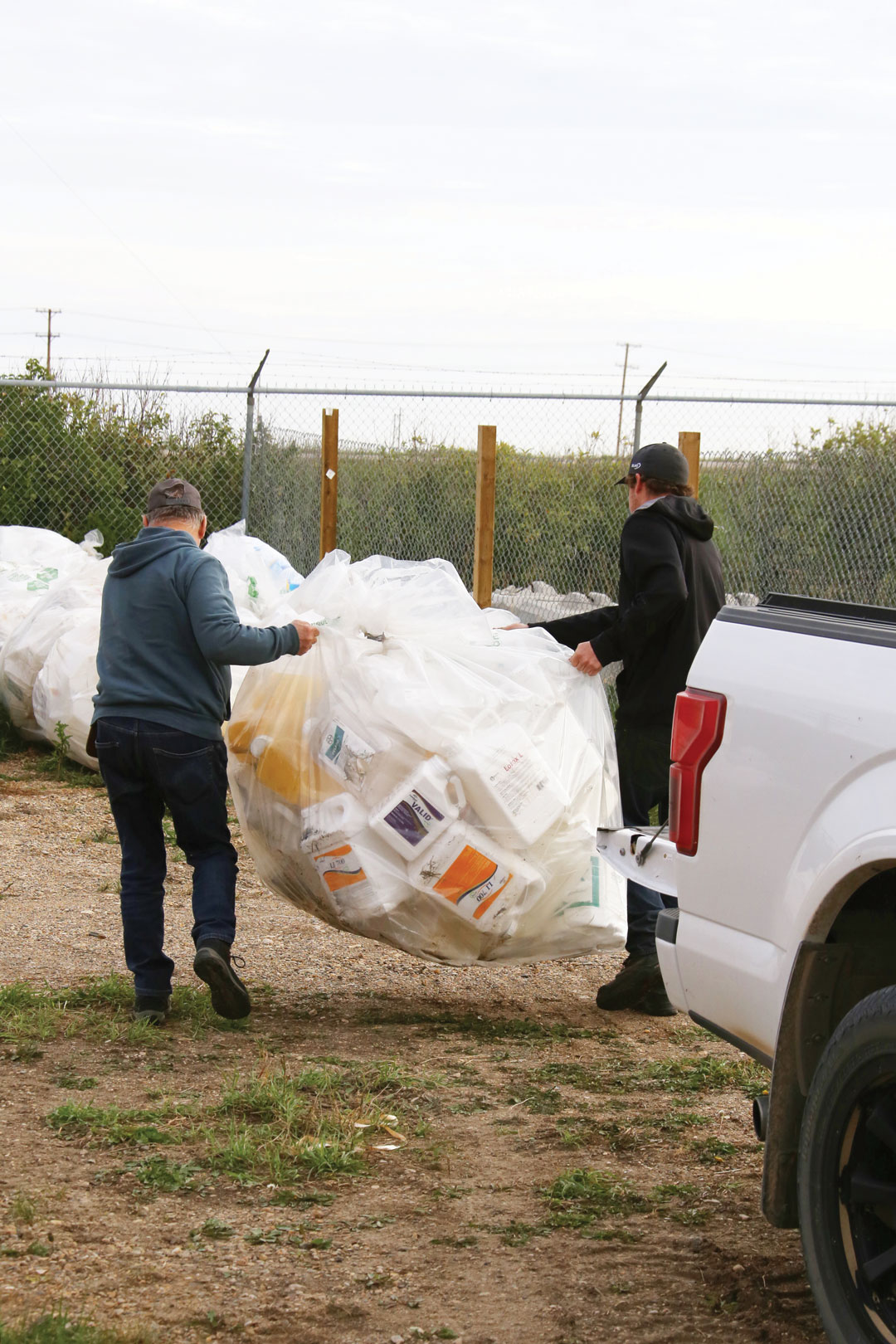EERIE PEST CONTROL
BY ZOLTAN VARADI • PHOTO COURTESY OF BELINDA DESMET
Entomophaga grylli is a stealthy Prairie pathogen that preys on grasshoppers in horror movie style. Can its deadly power be harnessed as a bio-pesticide?
This past summer, Peace Country agronomist Belinda DeSmet came across the fungi’s calling card: dead, discoloured grasshoppers, some missing heads, lifelessly clinging to the heads of wheat stalks. DeSmet posted a few photos of the scene to Twitter and captioned the carnage “Entomophaga grylli for the win” and added the hashtag #diegrasshoppersdie just so you’d know where she stands. The post earned DeSmet likes, retweets and a call from GrainsWest wanting to know more about the potential for this natural form of pest control.
“All through my career I’ve been very keen on looking for the bad bugs in crops but also for the good bugs and other things like fungus that will help us keep these bad insects at bay without having to spray an insecticide,” she said.
Entomophaga grylli fits the bill, albeit in a gruesome way. A grasshopper is infected as it contacts spores in the soil and on vegetation. These spores penetrate the unlucky host’s body and multiply. Particularly macabre, through a yet unknown mechanism, the fungi compels the grasshopper to climb to a high point where the unlucky insect bursts, and the spores are released into the wind. The phenomenon is responsible for the pathogen’s colloquial name, summit disease.
This may sound familiar to fans of the Alberta-filmed TV series The Last of Us, in which a fungal infection turns people into zombies and kills them. But while fatal fungi are a relatively recent trend in Hollywood, DeSmet said the variety occasionally laying waste to grasshopper populations here in Alberta isn’t new.
“I’ve seen them for many, many years,” she said. “Every year the amount you find is a little different based on weather conditions. On dry, windy, low humidity years we see very little of this infection. Wet, humid conditions support the germination of spores. On wet and humid springs and summers we can find infected grasshopper bodies as early as mid to late July.” Though grasshoppers seemingly get a reprieve when it’s hot, the spores can over-winter in the soil. They remain dormant for two or more years, just waiting for ideal conditions.
Nonetheless, the fact that grasshoppers thrive in conditions not favourable for the fungus, and vice versa, makes it an unlikely candidate as a commercially successful bio-agent.
DeSmet said the fungus has worked to control the insects in greenhouse trials, though they typically do not invade such indoor growing facilities. “If you spray it on a field when it is dry out and there is no humidity, the fungus will die before it infects,” she said. “It wouldn’t have a lot of longevity on the plants if it’s dry. It needs moisture to live.”
Still, DeSmet said the fungus is a welcome ally in the fight against crop-threatening pests when extended weather conditions co-operate. “2023 had heavy grasshopper pressure in many areas of the Prairies and with the mild fall they had an extended egg laying period. Depending on spring conditions there could be heavy pressure again in 2024. Hopefully, we have the right conditions to promote the development and spread of Entomophaga grylli to help control the grasshoppers to minimize insecticide use.”







Comments